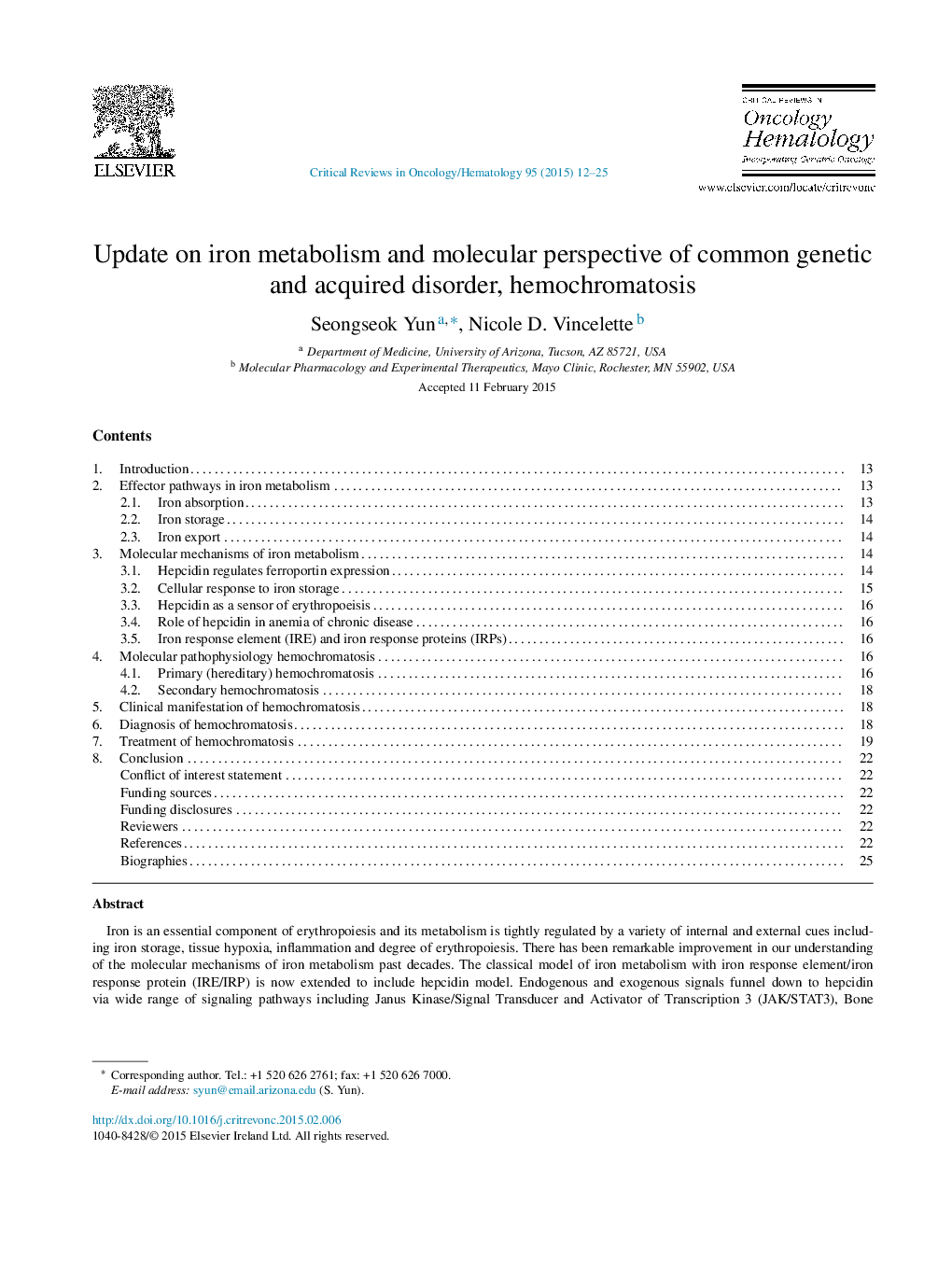| Article ID | Journal | Published Year | Pages | File Type |
|---|---|---|---|---|
| 3328609 | Critical Reviews in Oncology/Hematology | 2015 | 14 Pages |
•Iron is an essential component of erythropoiesis and its metabolism is tightly regulated by a variety of internal and external signals.•These signals funnel down to hepcidin via JAK/STAT3, BMP/HJV/SMAD, and VHL/HIF/EPO pathways.•Ferroportin, downstream protein of hepcidin, directly regulates intra- and extracellular iron levels.•Mutations of genes coding any of these proteins can cause iron overload and hereditary hemochromatosis.
Iron is an essential component of erythropoiesis and its metabolism is tightly regulated by a variety of internal and external cues including iron storage, tissue hypoxia, inflammation and degree of erythropoiesis. There has been remarkable improvement in our understanding of the molecular mechanisms of iron metabolism past decades. The classical model of iron metabolism with iron response element/iron response protein (IRE/IRP) is now extended to include hepcidin model. Endogenous and exogenous signals funnel down to hepcidin via wide range of signaling pathways including Janus Kinase/Signal Transducer and Activator of Transcription 3 (JAK/STAT3), Bone Morphogenetic Protein/Hemojuvelin/Mothers Against Decapentaplegic Homolog (BMP/HJV/SMAD), and Von Hippel Lindau/Hypoxia-inducible factor/Erythropoietin (VHL/HIF/EPO), then relay to ferroportin, which directly regulates intra- and extracellular iron levels. The successful molecular delineation of iron metabolism further enhanced our understanding of common genetic and acquired disorder, hemochromatosis. The majority of the hereditary hemochromatosis (HH) patients are now shown to have mutations in the genes coding either upstream or downstream proteins of hepcidin, resulting in iron overload. The update on hepcidin centered mechanisms of iron metabolism and their clinical perspective in hemochromatosis will be discussed in this review.
